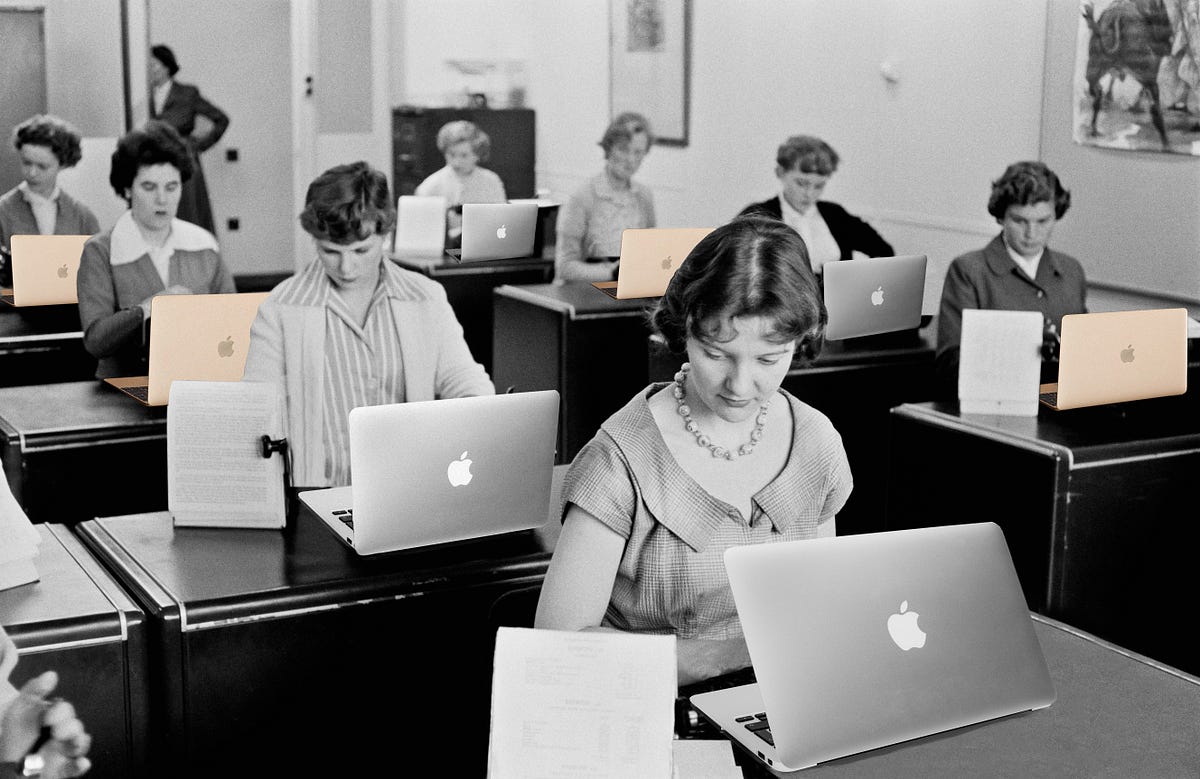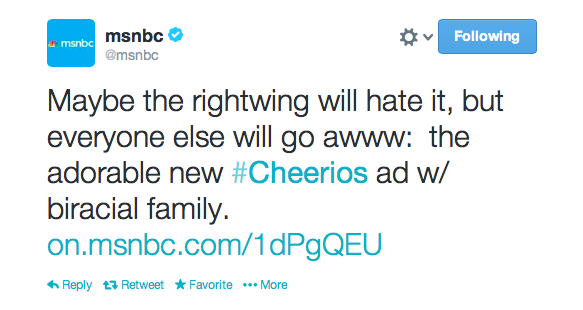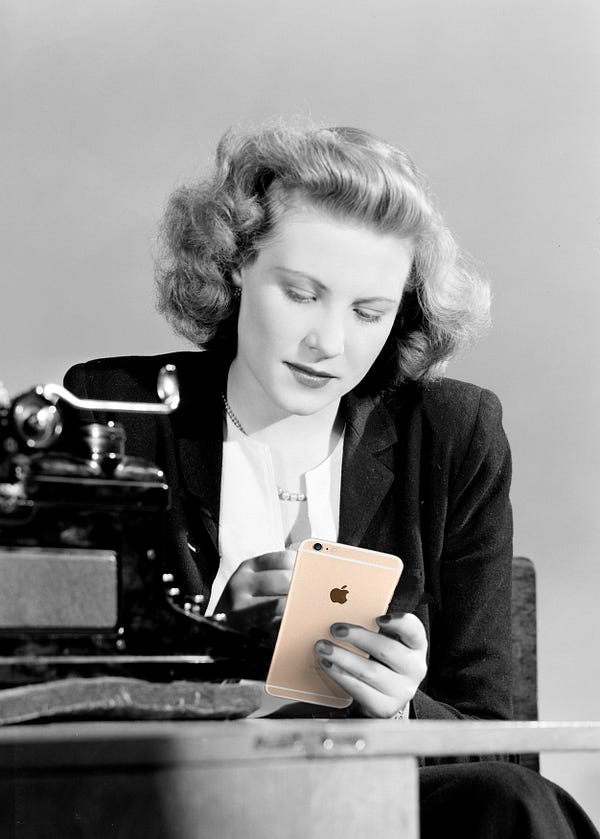In news organizations, female leaders outnumber men in only one division. What does that mean for the future of women in the newsroom?Myboss brought up the infamous Cheerios tweet on my first day. Almost a year had passed, but it was still a cautionary tale: At 8:06 pm on a casual Wednesday night, a seemingly innocuous tweet was sent out and quickly caused a firestorm. Within 24 hours, Republican National Committee Chairman Reince Priebus called for a boycott of the network and the president of MSNBC had to issue a formal apology. Unsurprisingly, they said they had “dismissed the person responsible.”
Horror stories of Social Media Editors Gone Wild are a dime a dozen, and I was keenly aware of all of them over the eight months I spent as an engagement editor at a political news site. Every terrible tweet that went viral contributed something different to my near-constant state of anxiety. I’d frequently imagine myself as that MSNBC employee, getting a talking to for a social media post that showed too much Democratic leg, or being the subject of a blog post for attaching the wrong picture to a tweet. If constantly being on social media wasn’t enough make me lose sleep, there was also the prospect of potentially sparking an entire day’s or week’s conversation with as little as 140 characters.
Even inside the politics of the newsroom, the pressure was high to perform. In a culture of fast-paced digital newsrooms where traffic is king, “social” can make or break a story. For sites relying on advertising as their bread and butter, social media editors help to save the newsroom from inevitable slumps in traffic. (For context, BuzzFeed, whose numbers are the envy of the online news industry, gets 75 percent of its traffic from social media). My work was critical to the success of my colleagues, reporters and editors with high page view goals— a reality that was both empowering and stressful.
I thought it might help to reach out to other social media editors to see how they were handling the pressure. I noticed a pattern: a shocking number of them were also women. I already knew that, statistically, women use social networks more than men. But additional research revealed that social media is one of the few areas of the news industry where women outnumber men in leadership positions. A study by the Colorado Women’s College at the University of Denver found that women are only 23.3 percent of leaders in media at large, but in social media that number is 55 percent. The role of social media editor stands in opposition to that of writer or editor, which is still predominantly male. The Women’s Media Center annual report found that only 37.2 percent of newsroom staffs were made up of women, a figure that has gone nearly unchanged since 1999.
How do these statistics play into the culture of the newsroom? As a possible explanation, Taylor Lorenz, a social media strategist and editor, says that in her experience “women are not encouraged as much to get into hard news.” Similarly, many other social media editors who work in the industry (some of whom wish to remain anonymous) describe the perception that social media is a “girly job.” One woman notes a vibe of “let’s give this easy job to a girl, she can handle it” around the office; that social media is seen as easier, “fluffy,” and not on par with other editorial roles. Even though it’s no secret that social media is critical to the current business models, one woman who works as a social media editor in news thinks “the position is always gonna be viewed as some dumb 20-year-old woman job.”
Young women today are looking to break into a news industry that’s concurrently trying to diversify and beefing up social media jobs; it’s no wonder that a lot of them end up in these roles. But Amy King, chair of VIDA: Women in Literary Arts, says women have long been cast as supporting players in the office. “Think of the classic trope of the secretary who does the work that her boss is actually getting all the credit for,” she says. The volunteer organization has done groundbreaking work in tracking the abysmal byline gender gap by combing through select national magazines annually for the past six years. The studies have revealed a persistent woman problem: “Women tend to do the behind-the-scenes work that is unrecognized or unappreciated,” King adds, partly because they are willing to.
It’s hard not to hear these stories and draw a parallel to public relations, an industry where 85 percent of workers are women. “People in the media like to say that PR is a pink ghetto,” because the often low-prestige jobs are almost exclusively populated by women, says a female editor, who left her job in social media at a major news organization. “But social media is the true pink ghetto.” She says her time in her previous role was characterized by unpaid overtime and a dearth of promotions and raises.
In her 2014 Jacobin magazine piece “Pink Collar,” Jennifer Pan explores why the entire PR industry is so heavily judged by the media, despite being critical to the news-making process. She posits that the “spoken heart of their criticism is the failure on the part of the publicist to adequately conceal that she is performing emotional work for money”:
The palpable distaste for PR practitioners that continues to swell — spearheaded by the very same members of the media with whom publicists theoretically enjoy a symbiotic relationship — requires, then, a deeper look at how gendered assumptions about work continue to shape our contemporary notions of creative labor under capitalism.
Though a field like social media requires a more direct relationship with a consumer than public relations, they both, at their essence, involve promotion; and they’re both — if done well — invisible. The newsroom’s social media manager doesn’t tag her tweets with her name, and the “flack” gets no byline when he gives a journalist access to a source. Unlike the job of editor, which also goes uncredited, these positions don’t have a high level of prestige.No one brags over martinis that they wrote the Facebook prompt for a Gay Talese piece.
“In my experience, women are the ones behind the scenes, just keeping the day-to-day process of the magazine running,” says Annie Shields, engagement editor at The Nation, where I was an intern in 2009. “[They’re] editing, polishing things up, and not getting credit.” Shields observes that although the editorial staff at the publication is largely female (the editor-in-chief is a woman), that doesn’t translate to content (only 29 percent of all Nationarticles are written by women). Men are in more visible roles, Shields says, ones that allow them to make media appearances and become well-known brands. For these guys, there is a straighter path to advancement, to becoming an opinion writer or thought leader in politics.
This element of invisibility begs many troubling questions: When an article blows up on Facebook, who gets credit? The reporter who wrote the story or the engagement editor who came up with the prompt? And who takes responsibility for the “frequent occurrence of criticism of the company getting channeled through social media” that Pan recalls dealing with on a daily basis? During her two years working in book PR, which involved running the publisher’s social media channels, Pan says she would often field tweets from people who hated certain books or editorial choices: “I wasn’t really making the decisions [about what books to publish], but I was acting as the buffer between the outraged public and the company.” The experiences left her feeling frustrated, and she ultimately left.
As I know personally, being this kind of middle man can be particularly exhausting, especially in political news. In order to be effective, I’d need to rewrite headlines to make them more conversational and “social media friendly.” But this, of course, would inspire some readers to email or comment that I was ruining the organization with “clickbait” — something that only added to my stress level. Writers, especially those that are pushing boundaries, get criticized too. But they have the advantage of resources like editors and fact-checkers (and the ownership of a byline). At a smaller news organization, social media editors are often writing tons of copy that never gets looked over. One weekend, Shields remembers making a typo in a Facebook prompt, and returning on Monday to hundreds of nasty comments about “the 20-year-old idiot intern” that must have made the mistake. “The criticism is over the top,” she says. “I don’t know if other people at the magazine know what that’s like.”
The emotional toll social media jobs can take isn’t balanced by the security of an established career trajectory. “I was given increasing responsibility, but not increasing opportunity,” says the former female social media editor I spoke to. She, along with others I talked to, mention a kind of topping out that happens in the social media track, unlike other positions in the newsroom, like the path from cub reporter to writer to editor. That can be great for rising fast, but challenging longer-term. “There’s a limit to what you can do in a small organization in this role,” says Shields — one reason why she doesn’t see herself in it for the long haul. When she started to excel at her job, she was given new editorial duties like homepage editing, but was still expected to do all the old social media tasks. That’s not really a promotion or a job change — “it’s a recipe for burning out.”
Not everyone who works in social media feels drained, or wants to move on to the glory of writing. For some, the creativity of hyping journalistic work, and the mastery of analytics that often comes with it, is a destination in and of itself. Depending on the outlet, the job can involve tasks as varied as audience growth, original content creation, and breaking news. Lorenz, after a stint editing and reporting, went back to social media because she found she preferred the challenges of strategy and development. Similarly, Rubina Madan Fillion, the digital engagement editor at the Intercept who spent years doing social media at the Wall Street Journal, has always been an early adopter of social networks and finds her job to be a natural fit. “There’s just a lot more interaction with readers and the community [in social media],” she says. “It’s more interesting.”
Whether one finds social media personally compelling or not, its increasing importance to media companies is undeniable. Take “the dress,” Buzzfeed’s viral phenomenon that garnered 28 million views in 24 hours and brought issues surrounding social media and virality to the forefront. The post required the company to enlist additional tech support to manage the servers, and two editorial teams were tasked with finding new angles on the story. Many don’t know that “the dress” was not brought into mainstream consciousness by a reporter. It was Cates Holderness, a Buzzfeed community growth manager, who ran the organization’s Tumblr. When a reader messaged a question about “the dress,” Holderness thought it would make a good post. “It took me five minutes,” she told Digiday, who called her a “celebrity” in this interview. “I just pasted the Tumblr embed code and put up a poll.” (Holderness’ title is now Tumblr Editor at Buzzfeed BFF, a team that makes original content for social media sites and apps.)
Lexi Mainland, managing editor at A Cup of Jo, and the editor who led The New York Times’ first (almost all female) social media team, points out that the emerging field “can be a little bit of a back door, because it is a role that respects a different skill set.” She says many of her former female colleagues who started there at The New York Times have gone on to more traditional reporting roles within the company. I’m living proof of her observation: When I realized I wasn’t cut out for the social media editor game, I was able to parlay my experience into a staff writer position here at Matter. [I’m told I wouldn’t have gotten it without my social media expertise.]
Is there a downside to the increasing mainstream recognition of social media as a truly valuable editorial skill? Tiffani Lennon, the lead researcher and author of the University of Denver study on women’s leadership, says she thinks so. “If social media gets more credibility, you are going to see men pushing women out of leadership roles,” she says. “That’s what happens in every field once it becomes more institutional.” Historically, it’s been easier for women to dominate spaces that men don’t want to be part of.
Wallpaper’s associate editor of Audience Daisy Alioto doesn’t see things quite so bleakly. At just 23 years old, she held the title of director of social media and analytics at the International Business Times. Alioto thinks that part of what’s great about working in social media is that a lot of the old guard media men don’t get it, and in their ignorance, give young women carte blanche. Plus, maybe these ladies will stick around: “In another ten years, social will be a given. We will all be working on some other crazy iteration that’ll be dominating news,” she says. “And the industry will be run by all the women that got their start in social media.”(Source photos, from top: Bert Hardy/Picture Post/Hulton Archive/Getty Images; SSPL/Getty Images)




No comments :
Post a Comment